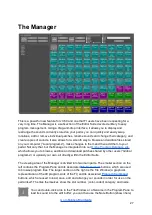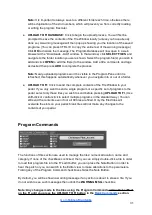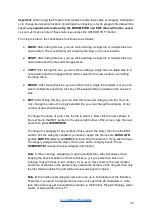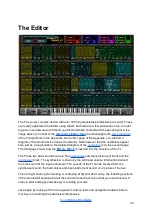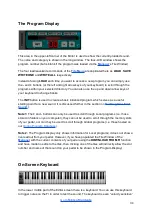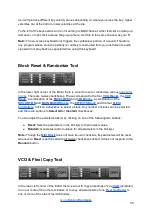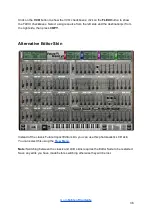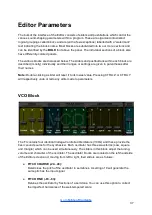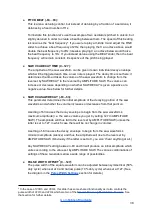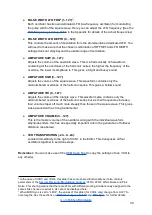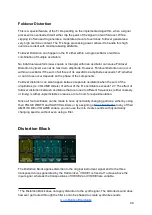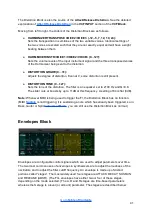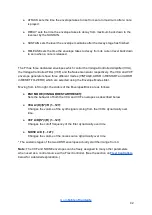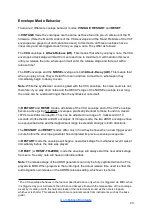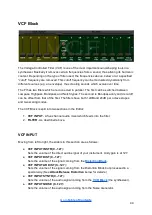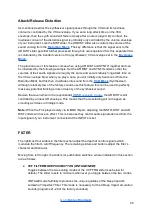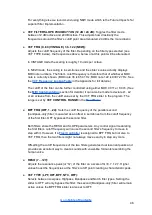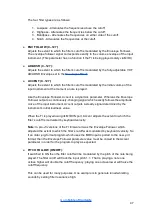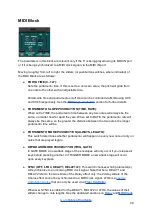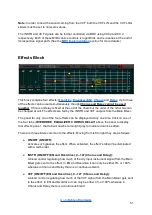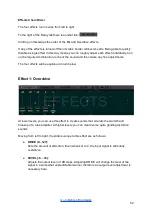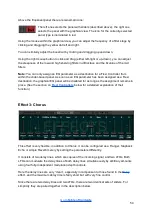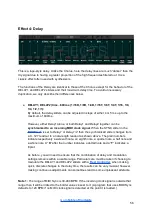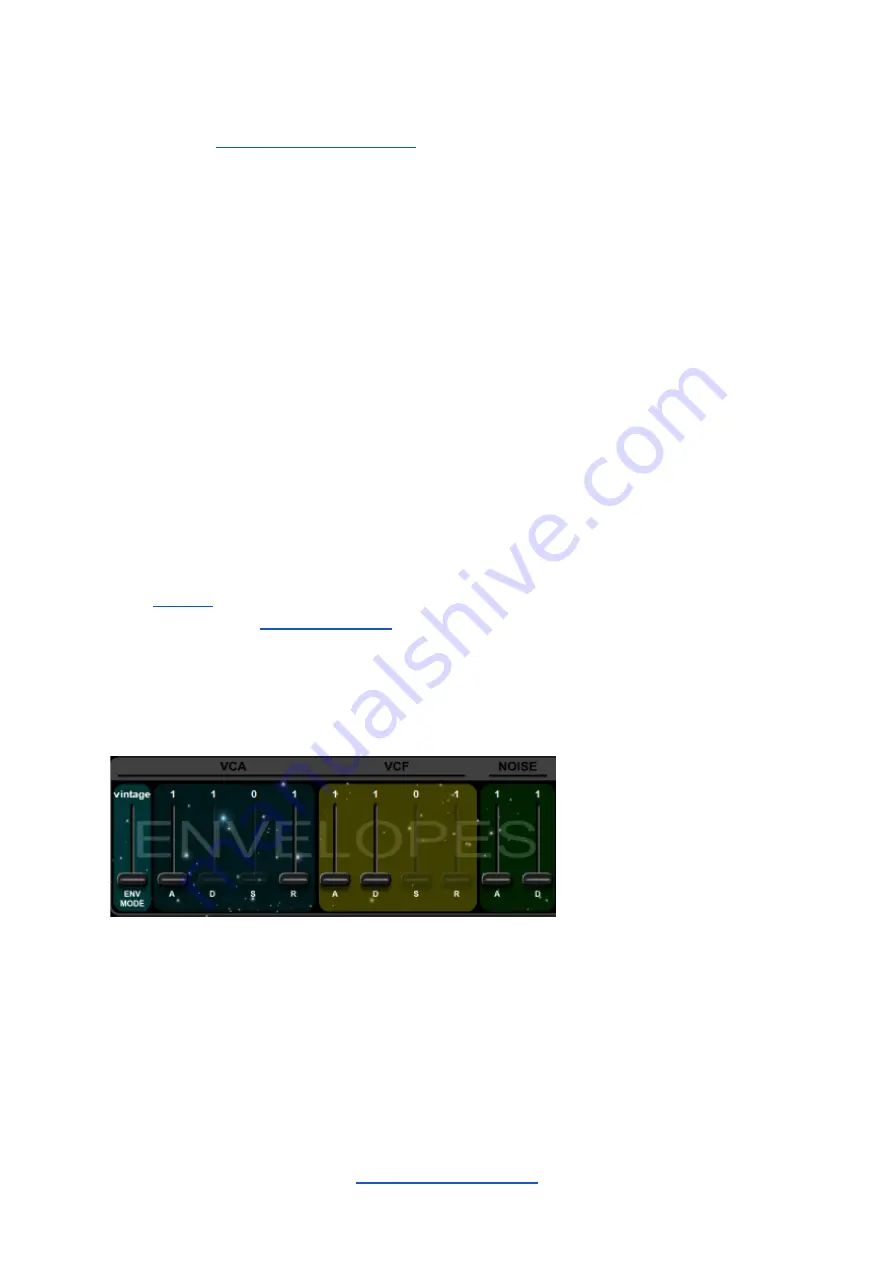
The Distortion Block is also the source of the
Attack/Release Distortion
. See the detailed
explanation of
in the
VCF INPUT
section of the
VCF Block
.
Moving from left to right, the sliders of the Distortion Block are as follows:
●
HARMONIZER TRANSPOSE VOICE2/VOICE3 (-12, -5, 7, 12, 19, 24):
Sets the transposition in semitones of the two variable voices. Identical settings of
the two voices are scaled such that they are not exactly equal and will have a slight
beating between them.
●
HARM MIXER INSTR/VOICE1/VOICE2/VOICE3 (0...127):
Sets the volume levels of the input instrument signal and the three transposed voices
of the Harmonizer being sent to the distortion.
●
DISTORTION GRADE (0…31):
Adjusts the degree of distortion. Even at 0, some distortion is still present.
●
DISTORTION TONE (0…127):
Sets the tone of the distortion. The filter is an equalizer set to 2100 Hz and Q=0.8.
The slider cuts or boosts by up to 11dB at this frequency. A setting of 64 is flat (0dB).
Note:
Whenever MIDI is being used to trigger the FI, the Distortion Block has no function.
(MIDI
is not triggering; it is sustaining a note which has already been triggered, so in
Bass, Guitar or Split
, you can still use the Distortion Block as normal.)
Envelopes Block
Envelopes are configurable control signals which are used to adjust parameters over time.
The two most common uses of envelopes in synthesizers are to adjust the loudness of the
oscillators and to adjust the filter cutoff frequency. An envelope is made up of distinct
portions called “stages”. The most widely used four stages are ATTACK, DECAY, SUSTAIN
and RELEASE (ADSR). (The FI’s envelopes have either two or four of these stages,
depending on the mode selected.) The A, D and R stages are time-based parameters
whereas the S stage is a level (or amount) parameter. The stages are described below:
41

